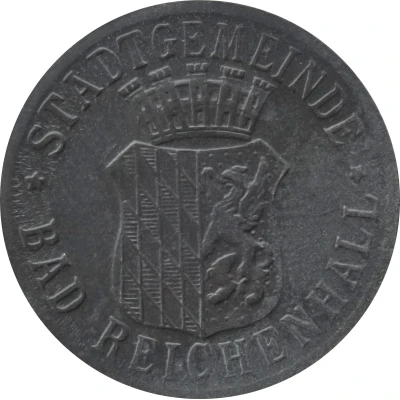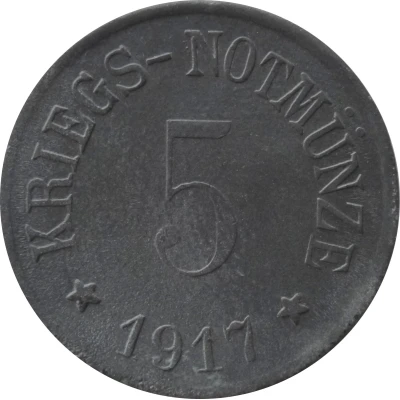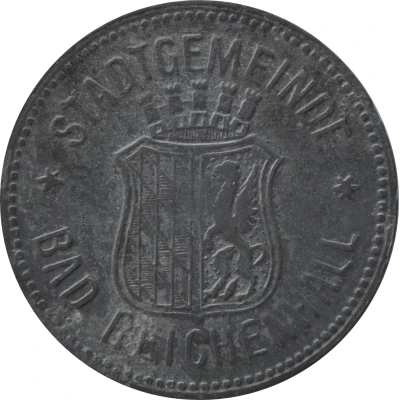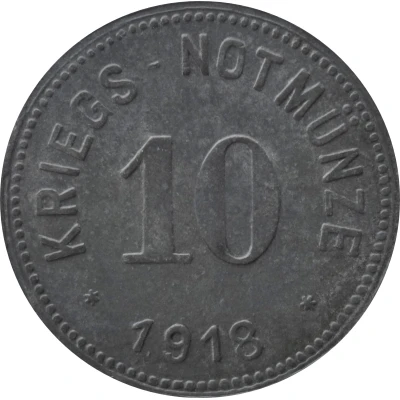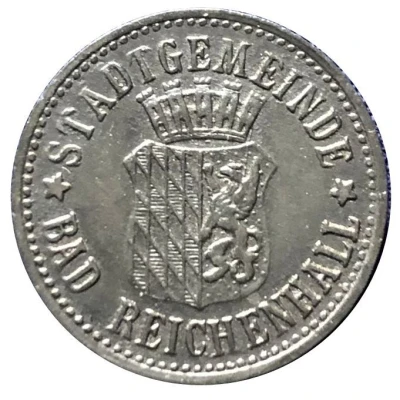
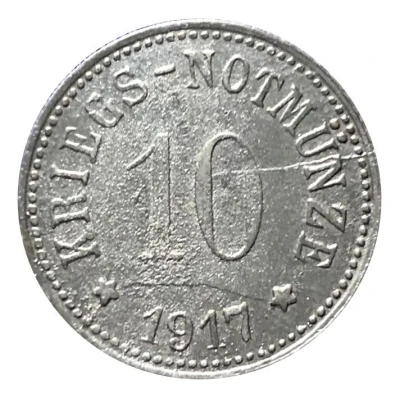

© Rhonan (CC BY-NC-SA)
10 Pfennigs - Bad Reichenhall
1917 year| Zinc | 2.1 g | 20.0 mm |
| Issuer | City of Bad Reichenhall (Federal state of Bavaria) |
|---|---|
| Emperor | William II (Wilhelm II) (1888-1918) |
| Type | Standard circulation coin |
| Year | 1917 |
| Value | 10 Pfennigs (10 Pfennige) (0.10) |
| Currency | Mark (1914-1924) |
| Composition | Zinc |
| Weight | 2.1 g |
| Diameter | 20.0 mm |
| Thickness | 1.0 mm |
| Shape | Round |
| Technique | Milled |
| Orientation | Medal alignment ↑↑ |
| Demonetized | Yes |
| Updated | 2024-10-04 |
| Numista | N#91110 |
|---|---|
| Rarity index | 73% |
Reverse
Pearl rim, legend surrounding denomination.
Script: Latin
Lettering:
KRIEGS-NOTMÜNZE
10
★ 1917 ★
Edge
Plain
Comment
Issuing body: [Stadt, Bayern].Interesting fact
The 10 Pfennigs coin from Bad Reichenhall (Federal state of Bavaria) made of Zinc weighing 2.1 g has an interesting fact that it was minted during a time of economic and political turmoil in Germany. In 1917, Germany was in the midst of World War I, and the country was facing severe economic challenges, including inflation and a shortage of metals. As a result, the German government decided to produce coins made of zinc, which was a cheaper and more readily available material than traditional metals like silver or gold. This coin is a rare example of a coin made during this time period and serves as a reminder of the economic and political challenges faced by Germany during World War I.
Price
| Date | Mintage | VG | F | VF | XF | AU | UNC |
|---|---|---|---|---|---|---|---|
| 1917 | 20000 | - | - | - | - | - | - |
Values in the table are based on evaluations by sales realized on Internet platforms. They serve as an indication only for 10 Pfennigs - Bad Reichenhall 1917 coin.
